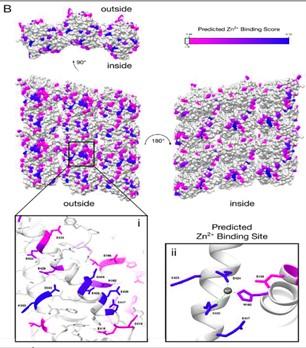Cytoskeleton社 Zn2+ decoration of microtubules arrests axonal transport and displaces tau...
| この製品に関するご意見・ご照会・お問合せはこちら |
 |
|
Zn2+ decoration of microtubules arrests axonal transport and displaces tau, doublecortin, and MAP2C
|
|
Changes in zinc levels have been observed in neuronal cells and have the potential to alter intraneuronal signaling; however, the precise mechanisms by which they elicit downstream effects have not been elucidated. Recent work by Minckley T. et al. identified Tubulin as an important target for zinc in the regulation of neuronal function. Preliminary live cell imaging studies were used to show that increased zinc levels resulted in a measurable reduction in both lysosome and mitochondria motility. As the transport of these organelles is facilitated by kinesins, the group examined whether zinc affected these motor proteins. Indeed, they found that zinc directly inhibits KIF5A kinesin motility which they determined using an inducible cargo trafficking assay...
Read More
|
 Above: 3D protein model of tubulin. Specific amino acids that are predicted to interact with zinc are highlighted. This figure was adapted from Minckley T. et al. JCB 2023 Above: 3D protein model of tubulin. Specific amino acids that are predicted to interact with zinc are highlighted. This figure was adapted from Minckley T. et al. JCB 2023 |
Link to Citation:
Minckley T. et al. Zn2+ decoration of microtubules arrests axonal transport and displaces tau, doublecortin, and MAP2C. J Cell Biol. 2023 Aug 7;222(8):e202208121. doi: 10.1083/jcb.202208121. Epub 2023 Jun 16.
Related Product Used:
· Tubulin Protein (Pre-Formed Microtubules): Porcine Brain (Cat # MT002)
· Kinesin Heavy Chain Motor Domain Protein (KIF5A): GST Tagged: Homo Sapiens Recombinant (Cat # KR01)
Visit Our Blog for
Newsletter, Citations, Upcoming Sales, and New Products
|
|
Recent Citation Spotlights
|
|
Senescent Stroma Induces Nuclear Deformations In Cancer Cells Via The Inhibition Of RhoA/ROCK/Myosin II-Based Cytoskeletal Tension
|
June 2023
MTSS1 Curtails Lung Adenocarcinoma Immune Evasion By Promoting AIP4-Mediated PD-L1 Monoubiquitination And Lysosomal Degradation
|
|
Recent studies of senescent cells suggest that they can induce tissue dysfunction in part through the secretion of soluble factors, a process that has been termed senescence-associated secretory phenotype (SASP). Several studies suggest that SASP can affect tumor cell proliferation, and invasion, and even modulated the tumor microenvironment. New research from Aifuwa et al. found that SASP disrupts proper outside-in mechanotransduction resulting in nuclear lobulations that propagates malignant transformations.
Read More |
Mechanisms that control cell migration and morphology are actively being studied in many different disease settings, and while the actin cytoskeleton plays an essential role, the mechanisms that regulate actin are still under intense investigation. Recently, Bogucka-Janczi et al. identified ERK3 as a novel regulator of the actin cytoskeleton in the setting of cancer cell migration. The group performed preliminary studies showing co-localization of ERK3 with F-actin-rich protrusions in human mammary epithelial cells.
Read More |
|
|
|
| www.cytoskeleton.com |
Fount of Information は、新商品、新規取扱メーカーなどの情報をいち早く紹介するコンテンツです。情報発信のスピードを重視しているコンテンツのため、現時点で法規制や取り扱いを確認できていない商品、定価を設定できていない商品があります。ご要望やご照会を受けた商品について、法令整備や在庫の充実を図ります。





